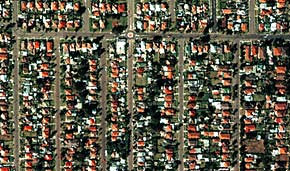The Third City> Sydney's Original Monuments and a Possible New Metropolis

How did Sydney’s original dwellers build? What has happened to their structures? And what should happen to the tracts of now-obsolete bungalows sprawling across the suburbs? Peter Myers provides historical evidence and the design strategy for a future metropolis.
What if our present historical city was not the first urban structure to occupy the coastal region extending from Port Stephens to Kiama? What would this primordial city reveal, what lessons of history could we learn; just what of this first, prehistoric, Sydney was admitted, and what was denied, in the making of our second, historic, metropolis?
Well, proving a vast and ancient First Sydney is, like Newton’s falling apple, ridiculously easy. I cite Newton because it was the collapse, in 1991, of a section of lime plaster cornice in our circa 1853 Blacket villa, that led me to, maybe, the First Fleet’s best-kept secret.
Meaning in the Shells
Previously, in 1974, while working in Arnhem Land, I assessed the suitability of a local cement aggregate brick for domestic construction. Unwittingly, the coarse material for this sample had been obtained from a previously undisturbed system of shell middens, some 100 metres wide and extending 20 kilometres along Manakadokajirripa’s dunes, east of the Blyth River estuary. I obtained two of these bricks and sent one to Professor Rhys Jones at the Australian National University for analysis. Jones subsequently confirmed that his sample, being made from midden materials up to 7000 years old, was indeed the world’s oldest brick containing a machine-pressed ‘frog’.
Meanwhile the plasterers ran a new section of the missing cornice and I, for some reason, kept the original fallen fragment. Then, years later, it hit me: this cornice section contained still unburnt shell fragments! These had to be shell fragments, they could not be partially slaked chips of quarried rock lime, because they had not subsequently hydrated in-situ.
So if Edmund Blacket had specified shell lime for the construction of our house, where did he get it from? The answer is that not only Blacket, but every builder in old Sydney town, obtained building lime from the region’s approximately 200 shell lime kilns. So we, or rather our predecessors, burnt the shell monuments of the prehistoric or First City, in order to construct the present historic or Second City.
Originally published in Architecture Australia. Read the full article.
Image: Contemporary (1999) aerial photograph of the Auburn district in western Sydney.